Stair Lighting
Our LED lighting system for stairs and hallways can accommodate an unlimited number of motion sensors and can function independently to increase safety while providing a visually appealing illumination at floor level in any space.
Key Features:
- Light Source: LED Strip
- Uniform light distribution with no discomfort glare
- Dotless Design
- Dimmable (ELV)
- Fully controlled by motion sensors to avoid the unnecessary consumption of energy in the absence of human presence; can also be installed on a switch or timer switch
- Excellent heat dispersion extends life to ~50,000 hours
- Available in multiple finishes and trims
- Light source available in multiple correlated color temperatures
- All system components carry certification markings for the North American market
- Designed for indoor applications to offer an efficient illumination of various areas such as stairways, hallways, or other spaces where a safe and visually appealing illumination is desired at floor level
- Suitable for residential, office or hospitality industry settings
- Two year manufacturer warranty
- Tested by us for 48 hours in continuous use before delivery
- Delivered with customized installation instructions – professional installation required
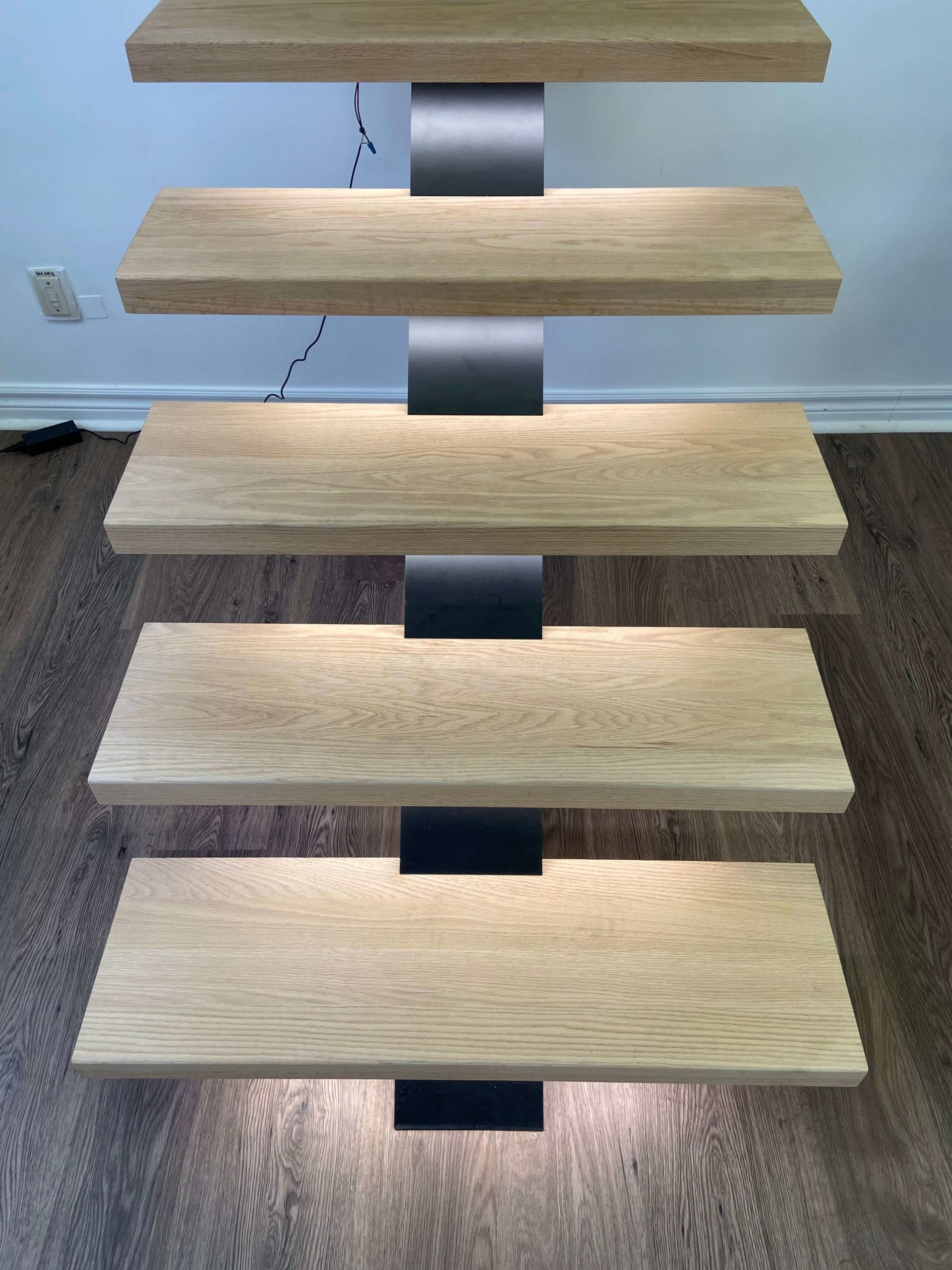

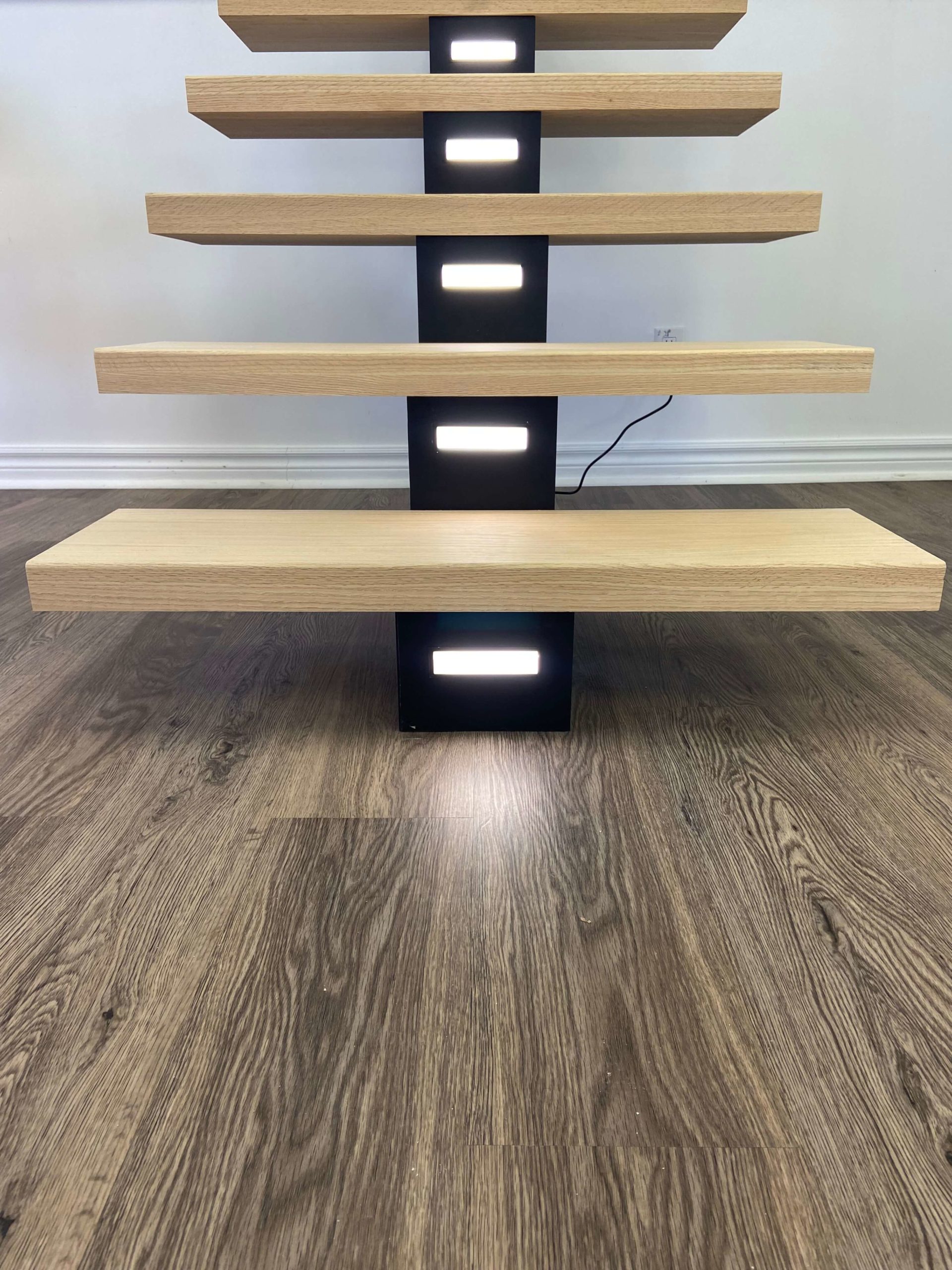
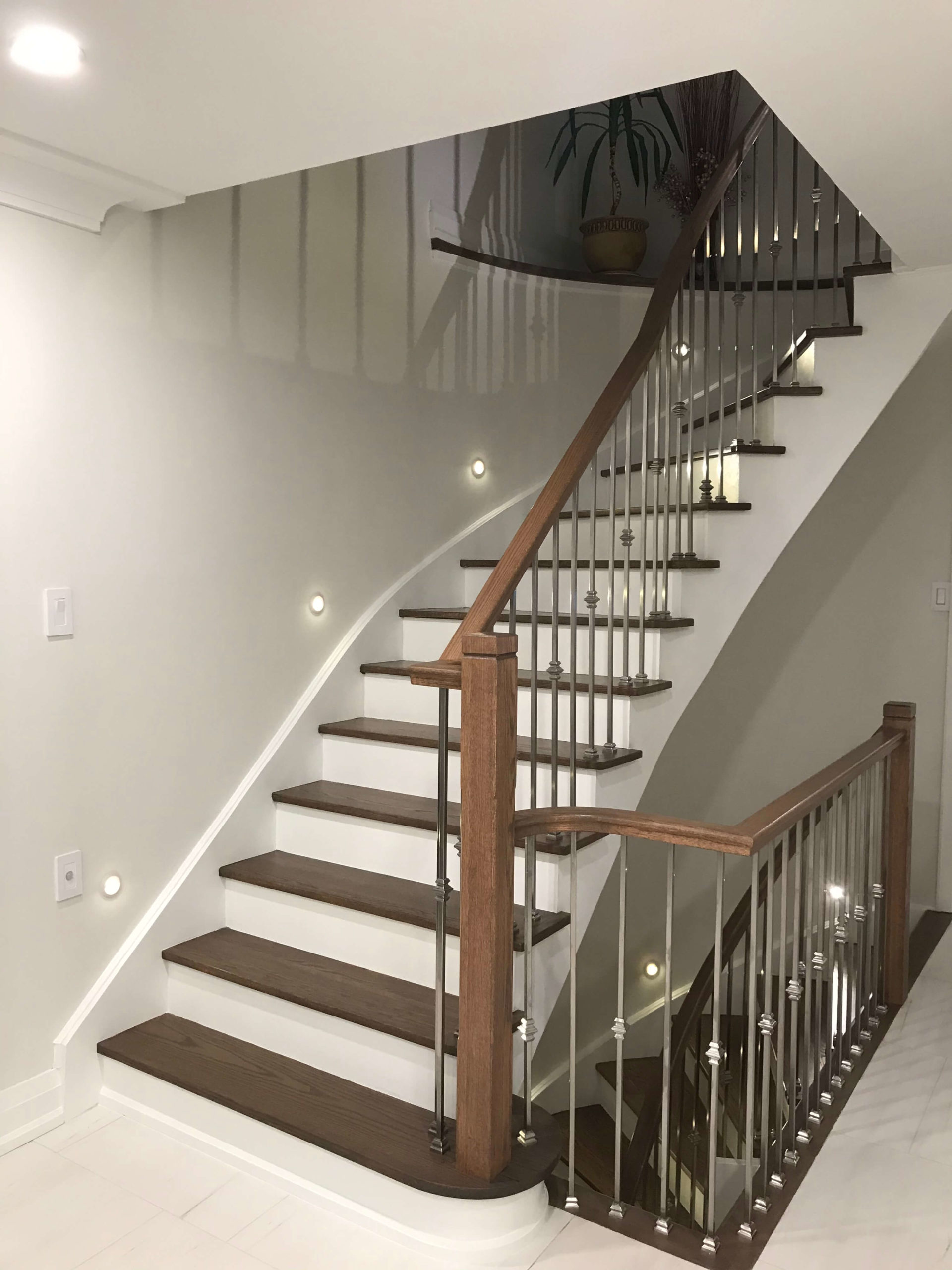
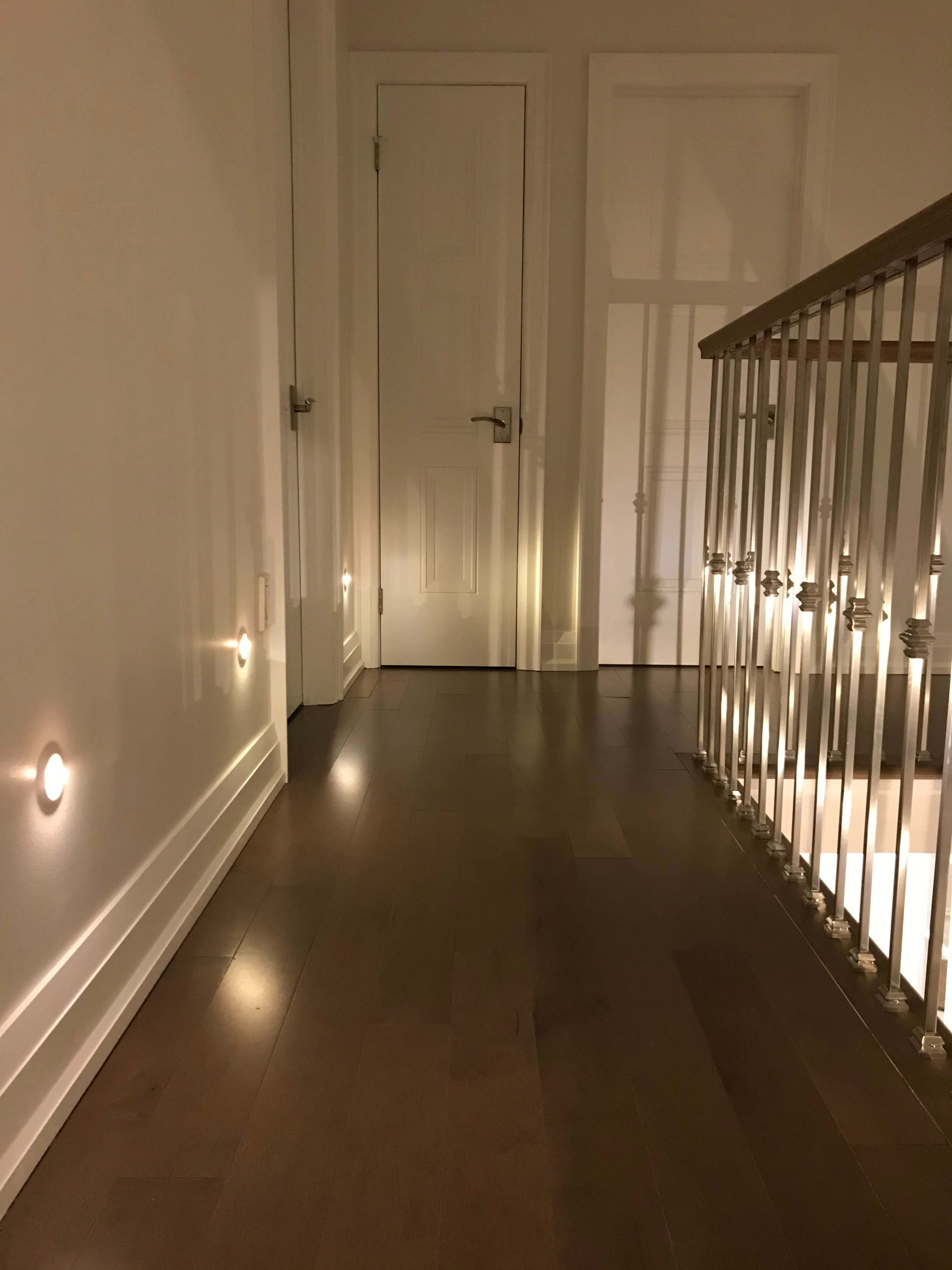
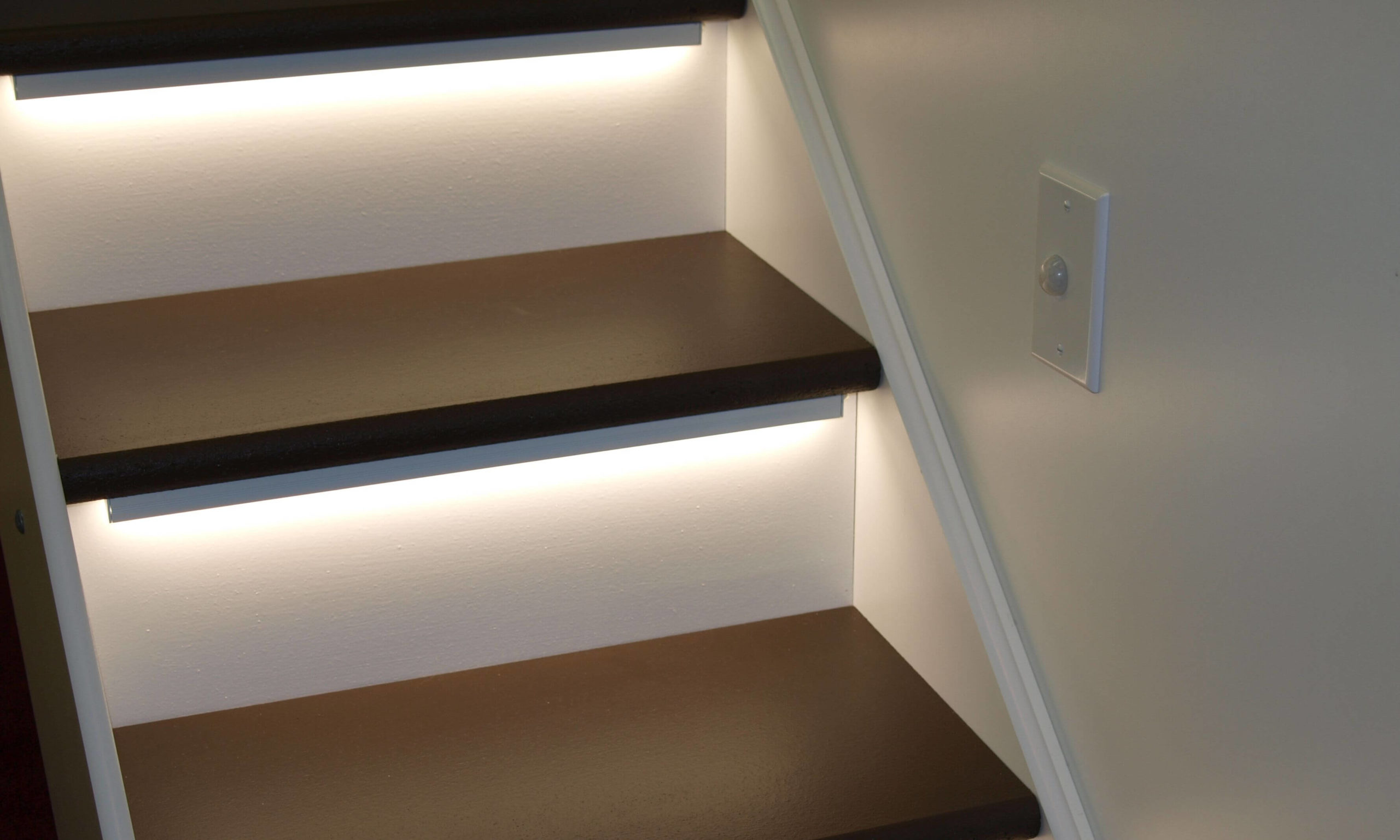
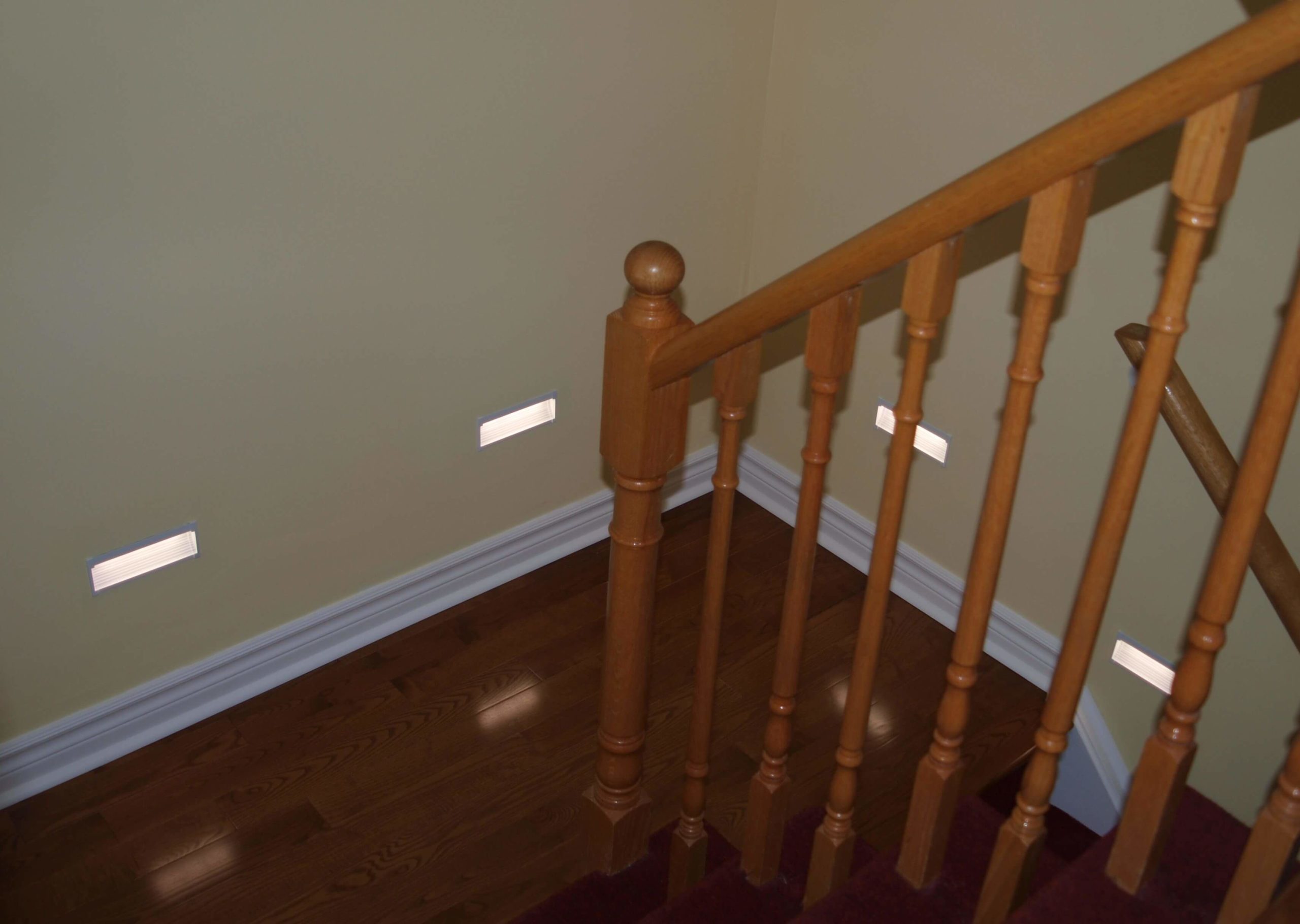
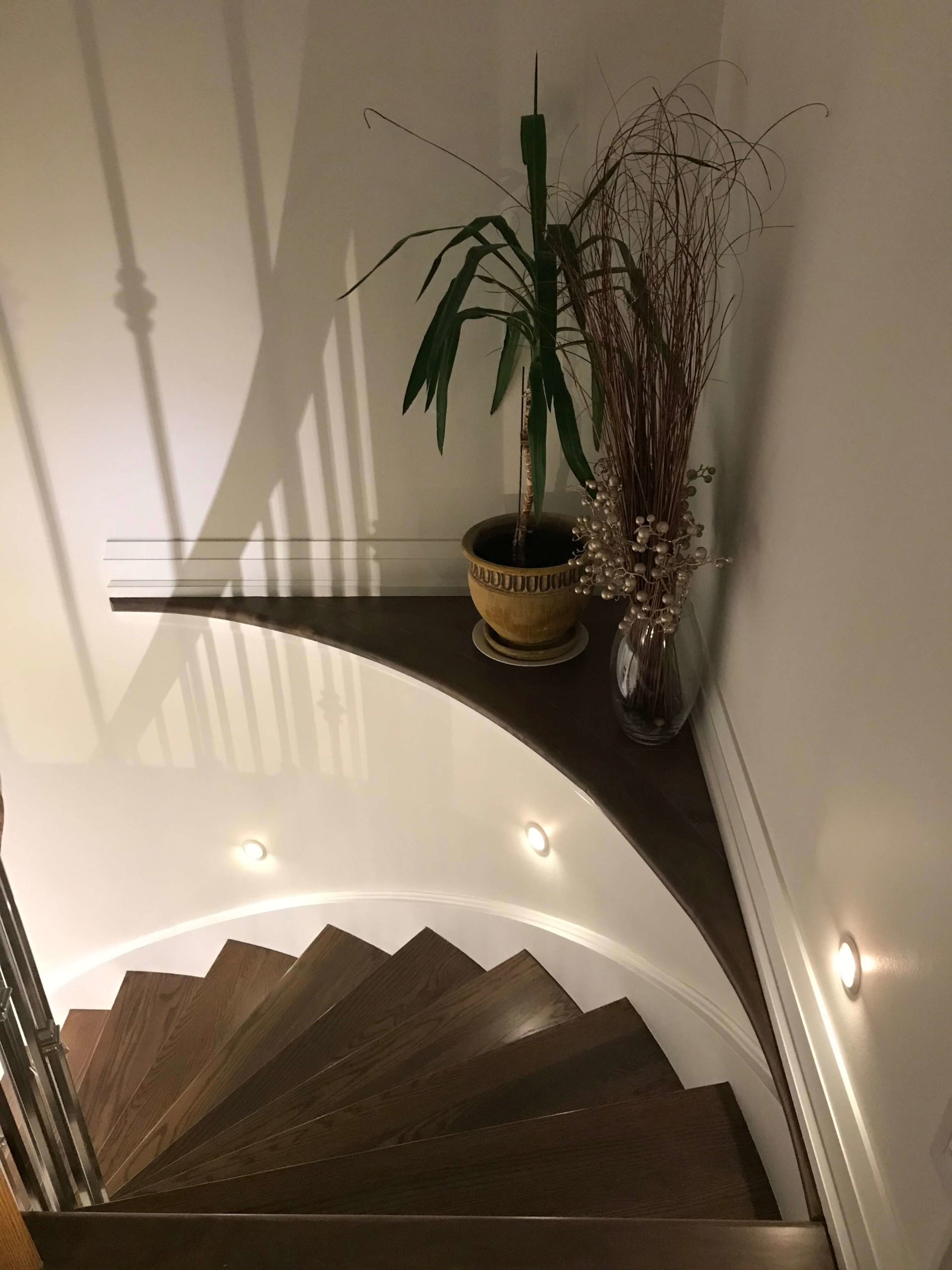
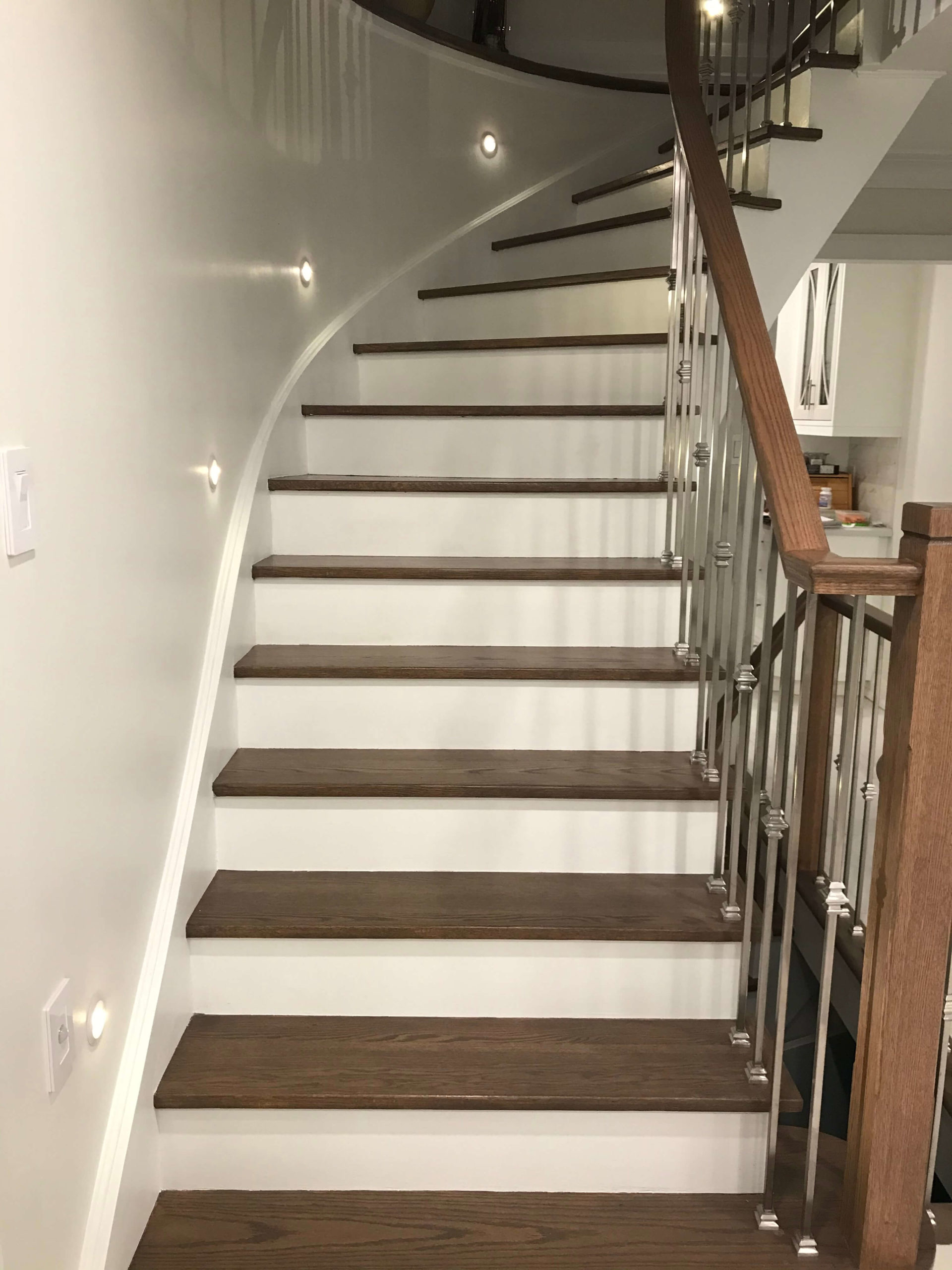
Stair Lighting FAQs
How to install stair lights?
There are several ways that stair lights can be installed.
- Recessed installation under the nosing of each step – each step is illuminated by the lights installed under the nosing of the step above. For this type of lighting it is most appropriate to use linear LED lights that are custom made to the lengths of each step. This is most common when stair lighting is considered at the time of the stair design.
- Recessed wall installation – if there is a wall along either side of the stairs, lighting can be recessed into the wall to illuminate each step from the side. The advantage of this installation method is that stair lighting can be more easily retrofitted than the first installation method and does not require alteration of the stairs.
- Recessed at the bottom of the handrail – depending on the design and construction of the hand rail, if made of wood, a linear LED light can be inserted into a groove running at the bottom of the handrail.
There is also a fourth method, however, that we do not recommend: installation of stair lighting into the riser of each step. This is not recommended as the light is likely to blind those climbing the stairs, depending on how high each flight of stairs is.
At Diana Lighting, we manufacture a wide range of stair lighting that is suitable for any of the three recommended installation methods above.
How to wire stair lighting?
Depending on the installation method chosen (see the previous question), wiring can be done either through the inside of the stairs, if hollow, or for floating stairs, the wiring can be run through the wall and out into each step. For wall-recessed installation, the wiring can be done through the inside of the wall.
How to light a staircase?
Stair cases should be very well illuminated since the risk of injury due to accidents is higher. At the same time, since traffic may not always be constant, keeping the lights on in a staircase at all times is not environmentally friendly or cost-conscious.
For this reason, our recommendation is for staircases to always be illuminated by a combination of stair lighting and ceiling lighting. At the same time, we recommend the use of motion sensors to control the lighting and ensure that the lights are always on in the presence of people or pets. Our recommendation is that when motion is detected, the ceiling lighting comes on while the stair lighting dims up. In the absence of presence, the ceiling lighting would be turned off while the stair lighting would be dimmed down.
At Diana Lighting, all of our stair lighting is controlled by motion sensors and we specialize in lighting controls to attain any type of lighting automation desired.

